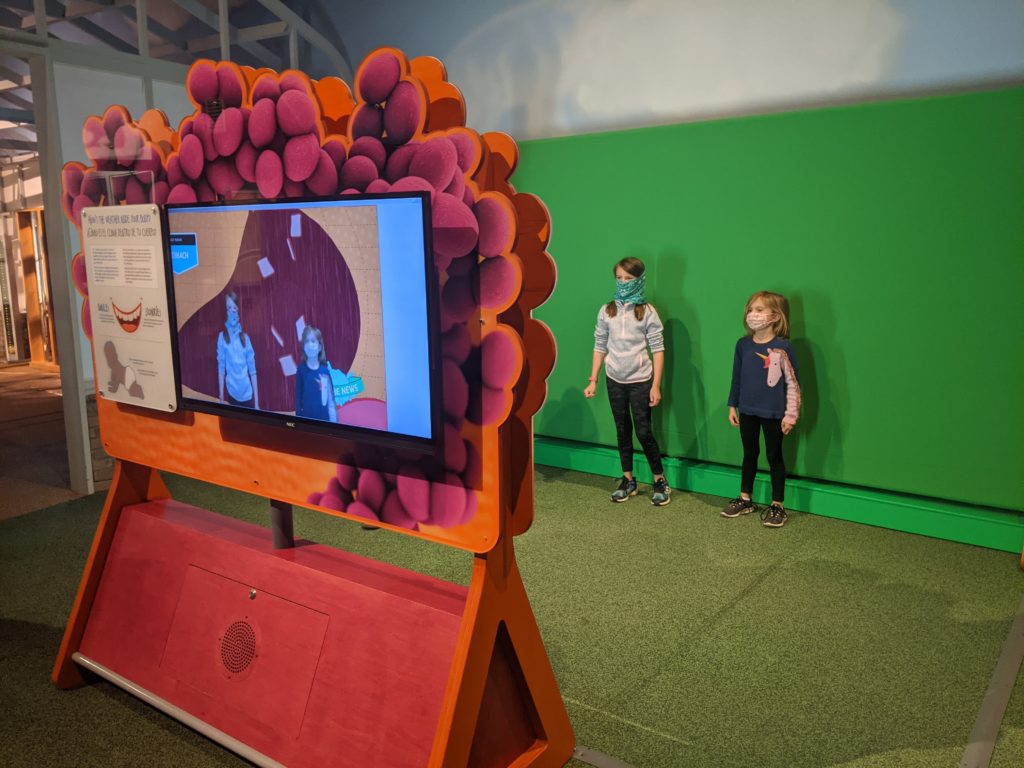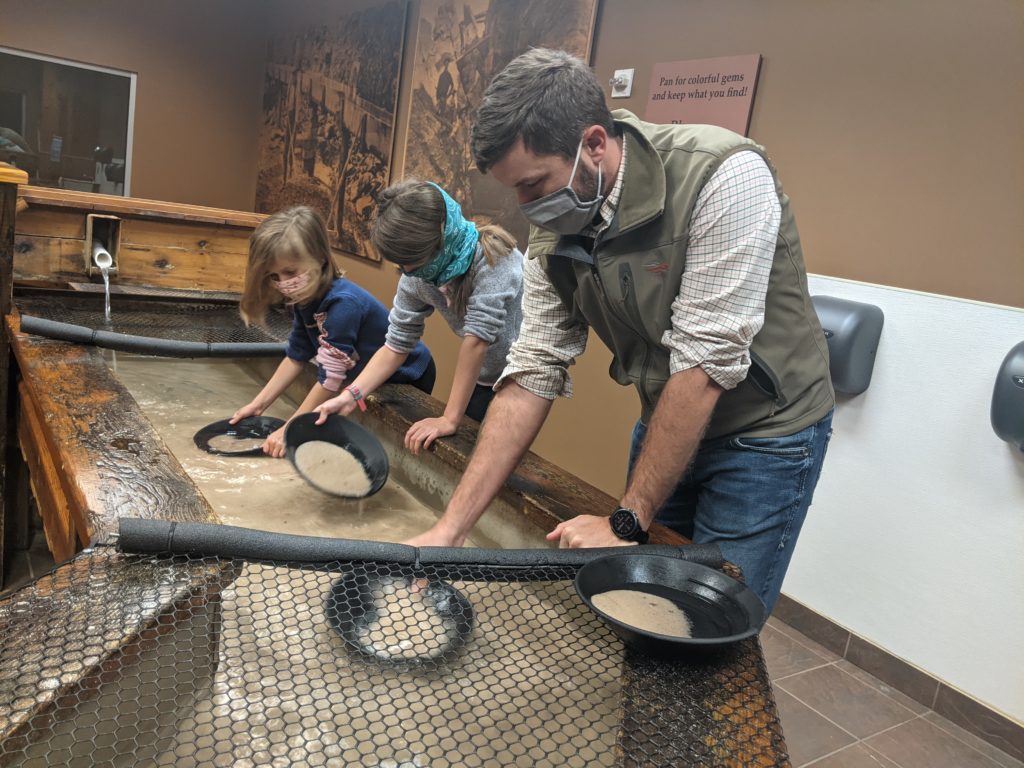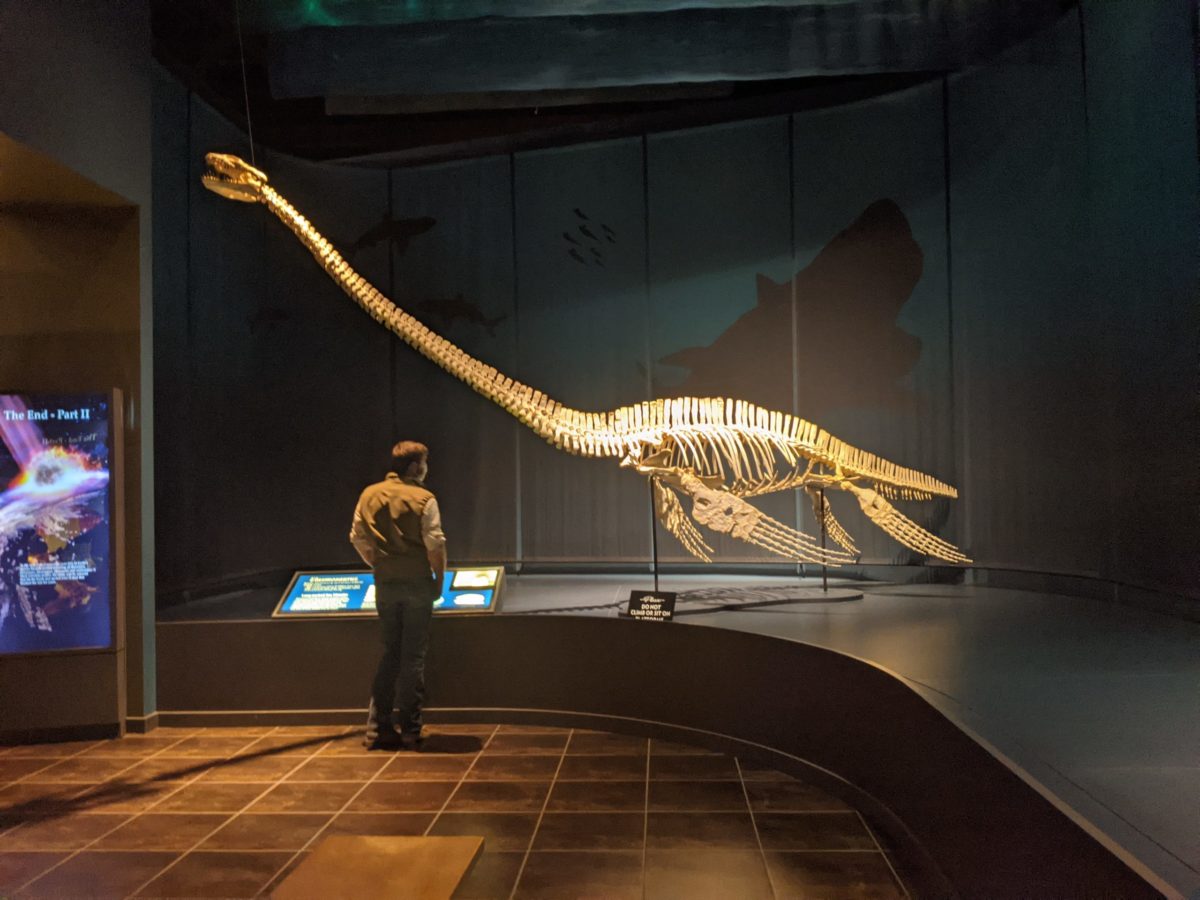100 Tellus Drive
Cartersville GA, 30120
TellusMuseum.org
You know how sometimes it takes having out-of-town guests to visit the local attractions? The Tellus Science Museum is kind of a version of this for our family. Located immediately off I-75, we pass Tellus every time we visit the grandparents, and always wonder why we’ve never gone. With an extra free day thanks to winter break, we finally rectified the situation, and we’re extremely glad we did.
The Tellus Science Museum occupies more than 120,000 square feet and features permanent galleries devoted to minerals, fossils, transportation and hands-on science experiences, as well as three galleries dedicated to special exhibits that change every six months to a year, so there is always something new to see. The building sits on a spacious and beautifully maintained lawn, which is the ideal spot for youngsters to work off some energy prior to entering the museum. The galleries are situated around a giant open center space – and when I say giant, I mean giant, as it houses an 80-foot long Brontosaurus.

We began with the Science in Motion gallery, which features past and modern transportation displays, including planes, trains and automobiles, but most importantly, space travel. Our nine-year-old future scientist has a special interest in the solar system and especially loved seeing the replica of the Apollo I capsule, Mercury capsule and Sputnik. As a kid who grew up watching M.A.S.H., I enjoyed seeing the1948 Bell-47 helicopter helicopter and trying to figure out how injured Korean War soldiers squished into the tiny cockpit without further injuring themselves.
A museum guide then informed us that, while the museum closed at 5 p.m., the My Big Backyard exhibit closed at 4 p.m. that day, so we headed in that direction. This well-designed space offers hands-on science exhibits, which was a huge hit with a slightly hyperactive six year old who was annoyed that she couldn’t climb onto the 1896 Ford Quadricycle in the previous gallery. The interactive exhibits featured experiments with light, sound, magnetism and electricity that kids see naturally in their own backyards. There’s also a super interesting video about astronaut poop (five stars, would watch again).

Next stop was the Fossil Gallery, i.e., the whole reason I wanted to go. Beginning with a timeline that makes you realize that The Land Before Time was a lie because those dinosaurs never lived at the same time, the space allows visitors to trace the history of life on Earth. Featuring all kinds of dinosaurs who lived under the sea and in the air (Pteranodons were tinier than expected!), a mammoth, a Triceratops and the piece de resistance: Stan, a 40-foot Tyrannosaurus rex with stupidly small arms. Fair warning: the sheer size of these prehistoric monsters is creepy for adults, and possibly too much for smaller children. The nine-year-old was fascinated, but the six-year-old stuck pretty close to my side the entire time.
The Weinman Mineral Gallery showcases one of the largest, most comprehensive collections in the Southeast, with more than 4,000 rocks, gems and minerals on display. My favorite exhibit featured a meteorite that hit a house just a few miles from the museum. Besides the 297-gram space rock, the display also included part of the roof, an attic rafter and part of the ceiling, all of which were struck by the meteorite. The Cartersville Meteorite is only the 25th documented meteorite found in the state, the first documented case of a meteorite hitting a house in Georgia (thank goodness). The kiddos particularly enjoyed panning for and identifying gemstones, and I appreciated that the water was room temperature, unlike when we panned for gold in Dahlonega in January.
In addition, Tellus includes a 200-seat presentation theater, a large multi-purpose room for events, four well-equipped science labs, an observatory with a 20-inch Planewave reflecting telescope and a Coronado solar scope, a full service cafe and of course, a gift shop. A 120-seat Planetarium hosts a variety of astronomy programs and 45-minute shows are shown throughout the day, including a Live Tour of Tonight’s Sky (I still can’t see constellations without the dots being connected for me). FYI, planetarium shows cost extra, but are a very economical $3.50 for your first show and $2 for a second.
The museum is open daily 10 a.m. until 5 p.m., but is currently only allowing pre-purchased tickets in timed increments due to COVID. The Fossil Dig was unfortunately closed (damn you again, COVID), meaning a return trip is definitely in the future. Which shouldn’t be a problem, as we’ve purchased season passes for us and the grandparents (Granddad is going to love the Science in Motion gallery!).

